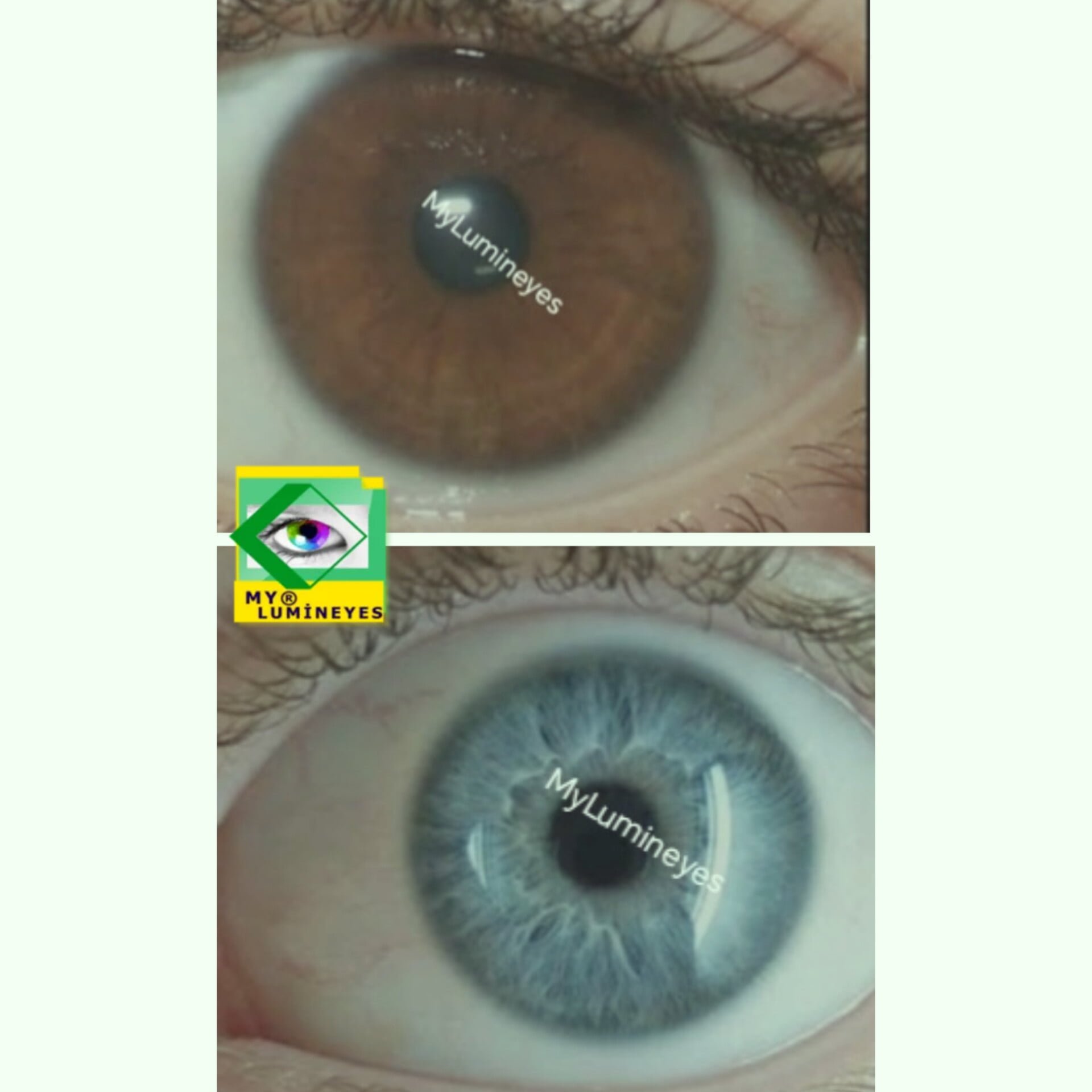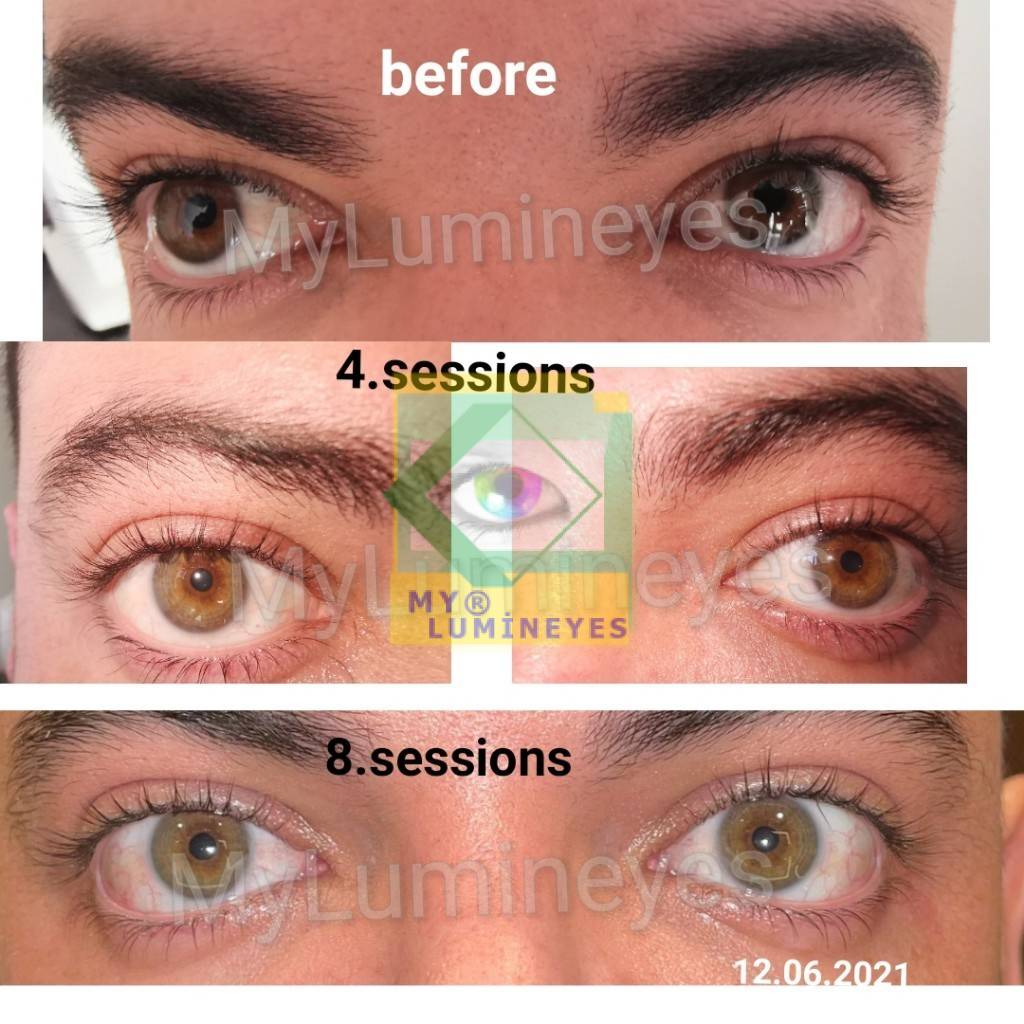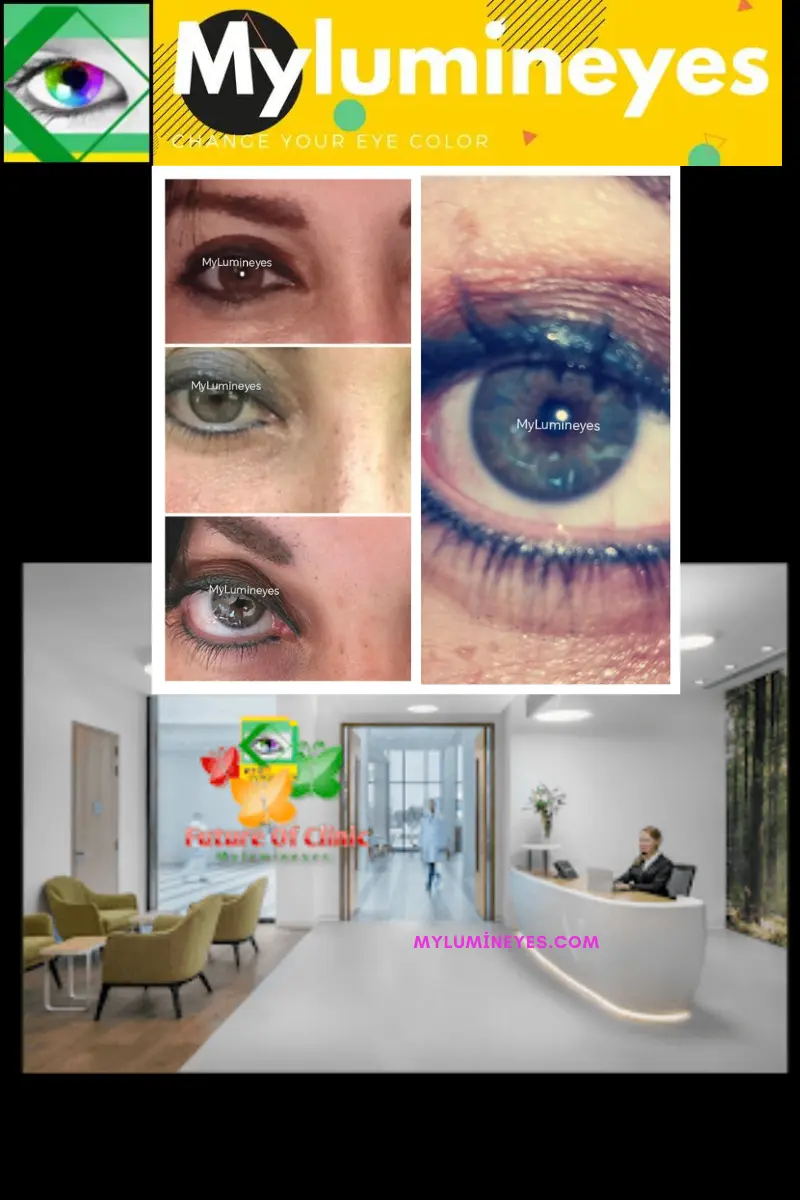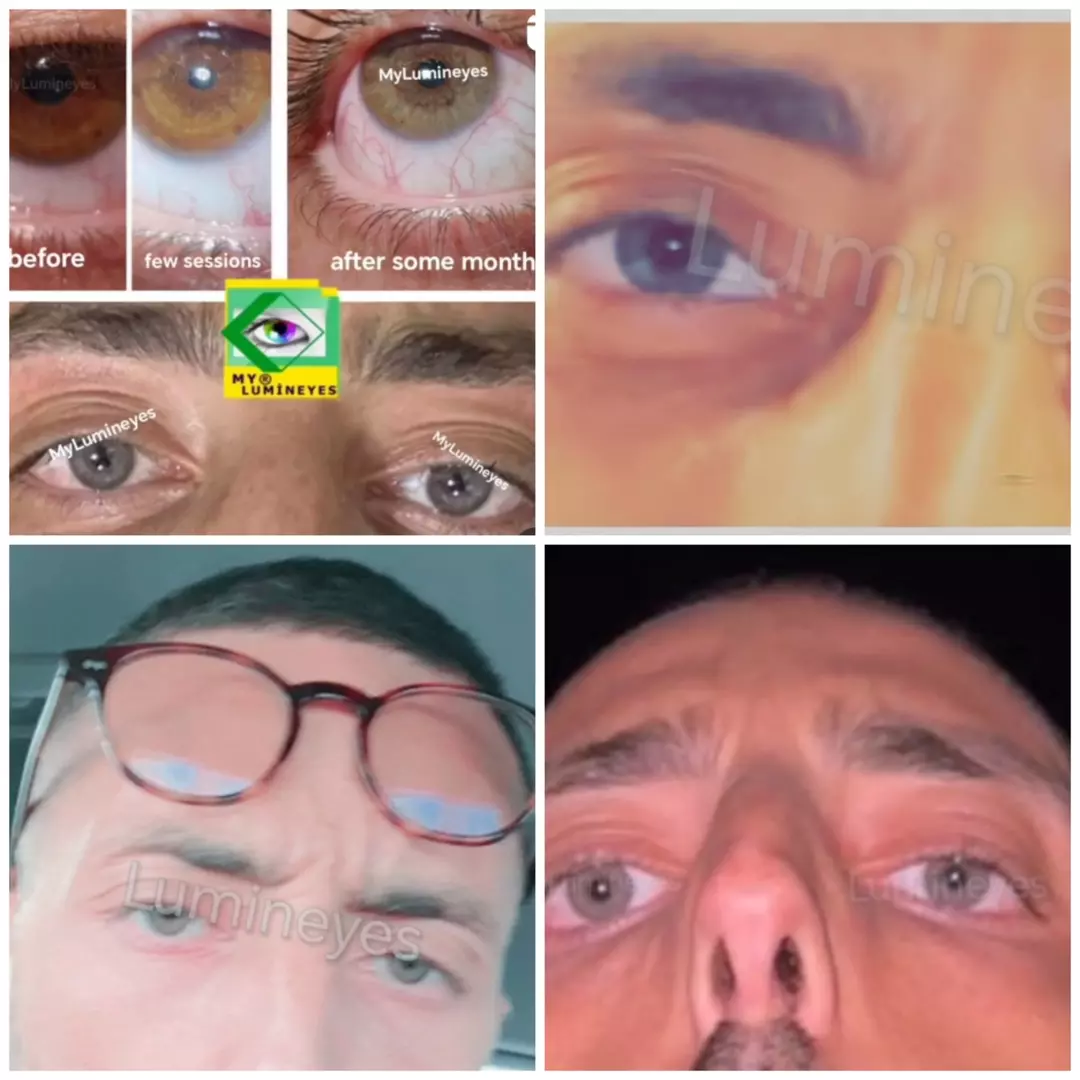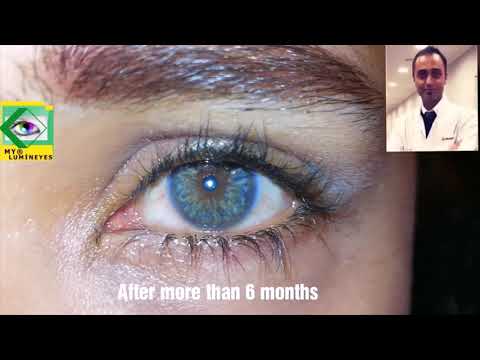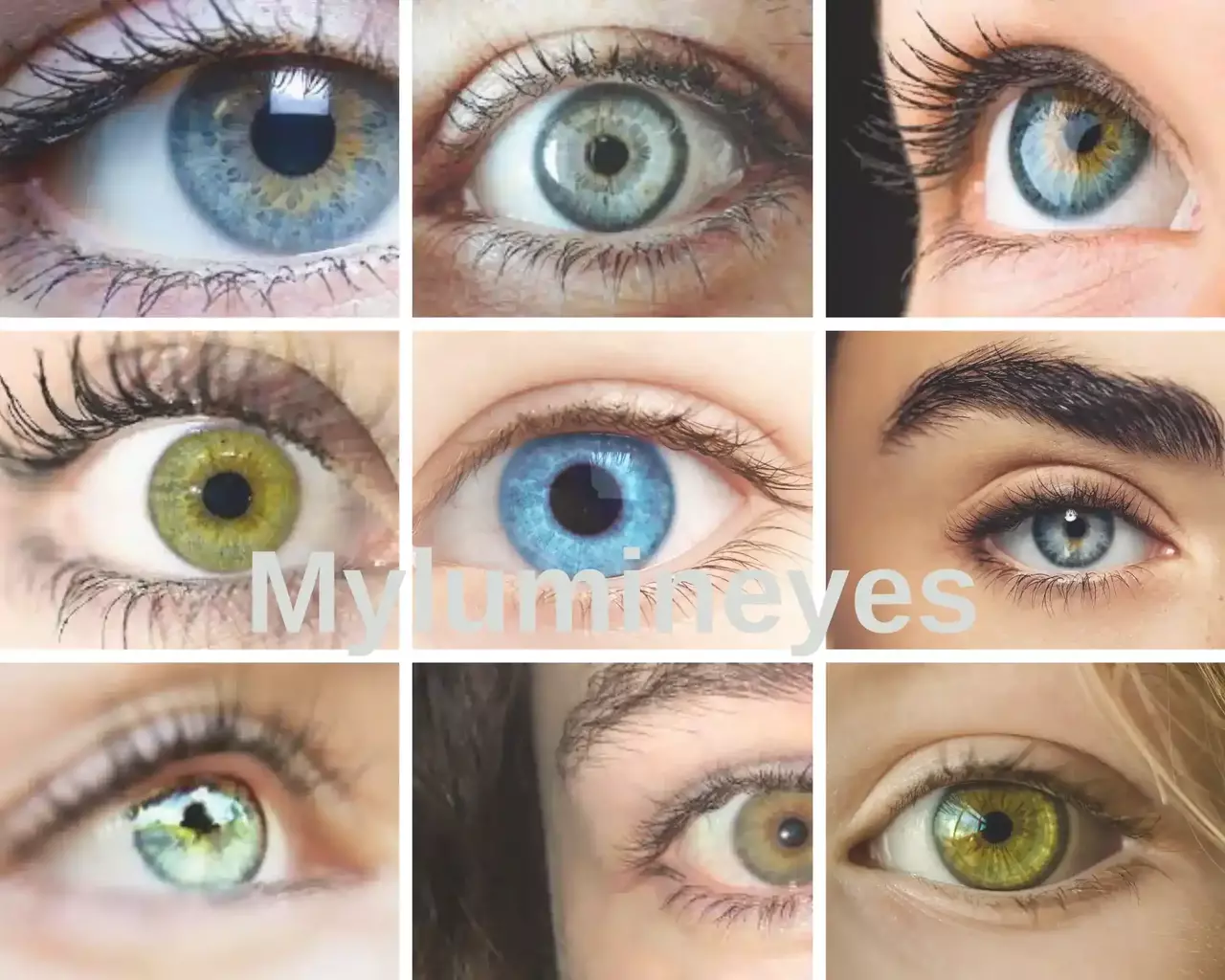Why do eyes change color?
We will talk about do eyes change color and why? How real and safe is surgery to change eye color? Basically, there are four main techniques to change your eye colour; in addition to these, there are certain misconceptions to consider. As previously said, each strategy has benefits and disadvantages. However, keep in mind that one of these tactics will stand out on almost every issue.
To begin with, in order to permanently change your eye colour, you must have a healthy physique as well as a healthy eye structure. After all, this is a medical operation, and we anticipate complete body and eye health. Another important consideration is the level of expertise of your doctor. At this time, my lumineyes clinic provides you with both a professional ophthalmologist and an experienced clinic.
Do eyes change color?
Finally, keep in mind who you put your confidence in. As previously said, although the answer to the issue of whether you can change your eye colour is yes, the key is to achieve a healthy and natural permanent eye colour change. Without a doubt, safety and healthy and natural eye colour change are two inseparable crucial factors.
We all know that today, everyone on the internet is busy praising and selling themselves. When it comes to facts, however, the reality is very different. On the contrary, misinformation causes some individuals to lose their eye health, time, and money. As a result, we wanted to create this tutorial to address the question, “Can your eye change color?”
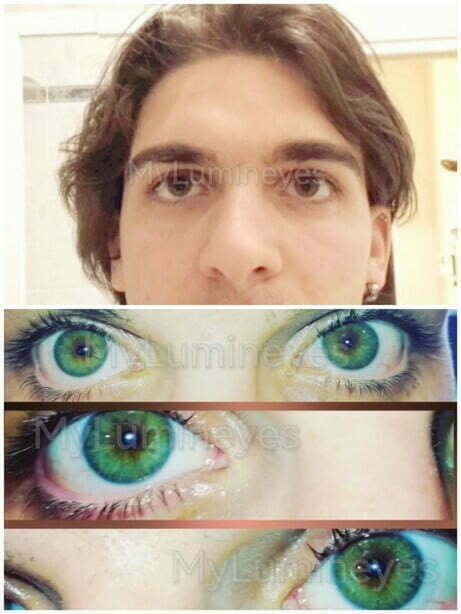
Can eyes change color? Why do eyes change color?
Babies’ eyes vary in hue when they first arrive. At birth, newborns have blue eyes as they lack melanin, a pigment found in cells that provides color.
Though usually blue, the color of newborn eyes may vary over a year.
In adults, eye color also changes temporarily and for a very short time. When people enter a dark and lightless place, their pupils dilate and become large to see better. As a result of this dilation, the iris around the pupil narrows and contracts. This constriction causes the eye color to change for a short time.
Though they are unable of concealing it, our eyes are rather adept at expressing our feelings. Furthermore, when one is pleased, sad, or furious, the color of their eyes may momentarily change for certain people.
How can my eyes change color?
For people with blue or green eye color, the eye color may change for a short time in sunlight. However, none of these changes correspond to desire, and these changes are not beyond the power of the person. So can eye color change according to desire? Why do eyes change color?
Those who suffer with low eyesight might choose to wear contact lenses rather than spectacles. Some people can use contact lenses to change their eye color if they so want; these lenses also exist in colorful varieties.
But this solution is not a permanent one. Apart from not being a permanent solution, it is a troublesome affair. In other words, eye color can change in certain situations and conditions. Some changes are permanent. Some changes are not permanent and depend on the person. So can eyes change their color? Can these changes be permanent?
The pigment “melanin” is responsible for eye color
The darker eyes are have more connective tissue at the front of the iris, termed as stroma. Eyes with less connective tissue are lighter in color. Many people’s melanin levels stay the same their whole lives, so their eyes stay the same color. A change in eye color is sometimes simply a natural aspect of aging and is completely safe. There are, however, a few factors that may permanently change melanin amounts. Melanin levels may be altered by ocular illnesses such as pigmentary glaucoma.
Genetics may also contribute to changes in eye color over time.
Heterochromia, often known as “multi-colored eyes,” may cause eye color to change over time. Severe injuries are often the origin of this condition. Heterochromatic eyes affect around 1.2% of the population. Only Dr.Mete can treat heterochromia in the world!
People can undergo plastic surgery on their unloved body parts. And they can repair their unloved body parts with plastic surgery. So how can we change our eye color? We can change our eye color temporarily with contact lenses. But this procedure is uncomfortable and also unnatural. So can eyes change their color? How to Permanently Change Eye Color? You will find the answers in this article easily.
Let’s take a deeper look at what’s causing your eye color to change and why?
Why do eyes change color? The iris is the colorful portion of the eye. The pigmentation of the iris controls the color of the eye. Irises come in six different colors: amber, blue, brown, gray, green, hazel, or red. Amber eyes, which are sometimes mistaken for hazel eyes, are a complete golden or copper hue with no specks of blue or green like hazel eyes.
Little variations in eye color are conceivable for an adult. For example, long-term sun exposure might cause your eyes to darken noticeably; but, a small percentage of Caucasian people’s eyes brighten with age. Your eye color won’t vary most of the time, though, and significant fluctuations might point to a more serious problem.
Surprisingly, our eye color does not always stay consistent throughout our lives
And occasionally, the change seems to occur spontaneously. People are bewildered by hazel eyes and wonder whether they are green, gold, brown, or a combination of the three. People have speculated that since the color isn’t well defined, hazel eyes are more like chameleons, changing eye color depending on their surroundings.
Eye color is determined by the pigment in the eyes; brown eyes have more pigment than hazel eyes. Hazel eyes straddle the line between brown and blue, with less pigment than brown and more than blue. The quantity of pigment in the eyes varies according to heredity; therefore, eye color might change throughout time.
Natural Age-related Changes in Eye Color
Children are one of the most common reasons of changes in eye color. When babies are born, their eyes should be bluer or darker. This is mostly caused by newborns’ eyes not having enough melanin because they don’t get enough light. When they are in the sun, melanin production goes up, which changes the color of their eyes.
While scientists are looking into the reasons for eye color variations, some eyecare professionals believe that the changes are more perceptual than physiological. Our eyes take in part of the colors that are reflected off of adjacent objects. That explains the variations in hazel, blue, and green eyes.
While scientists are looking into the reasons for eye color variations, some eyecare professionals believe that the changes are more perceptual than physiological. Why do eyes change color?
Many medical conditions can affect eye color:
- Eye Injury: If you hurt your eyes, they might look a different color. If you hurt your eye, you need to see a doctor right away to make sure there is no long-term damage.
- Lisch nodules are the little brown bumps on top of the eye. These are caused by neurofibromatosis and are not usually linked to eye loss.
- This is Fuchs Heterochromic Iridocyclitis makes the iris and other parts of the front of the eye swell up. Loss of iris pigments can cause changes in the color of the eyes. You may also get cataracts, which can turn into glaucoma if you don’t treat them.
- Color Changes Related to Medication: Certain medications may make eyes darker. Color changes brought on by medication could be permanent.
- An unusual condition affecting the pupil or iris, Horner’s syndrome is often caused by a stroke or other damage to the nerves on one side of the face. It might make one pupil appear larger than the other, changing the colour of the eyes. Iris depigmentation may also follow from it.
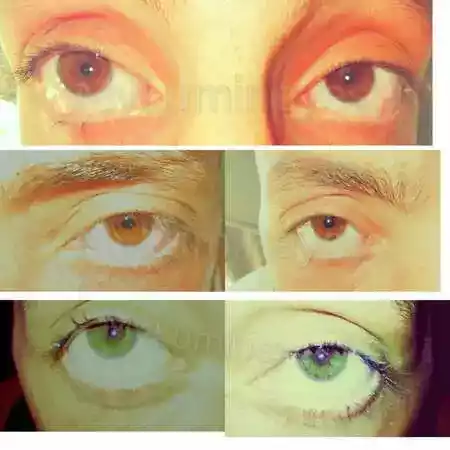
Other medical problems
Some drugs might cause changes in eye color. One good example was a prescription-only brand-name eyelash growth serum. While the adverse effect was uncommon and typically needed the drops to be given to the eye rather than the lash line, a component in the serum may have the capacity to affect eye pigments.
Take a moment to carefully observe the colors in your surroundings or the area around you.
Occasionally, there are cases where your eye color may seem different, even though it remains unchanged. Modifications in pupil size can lead to a slight alteration in the appearance of your eye color.
Why do eyes change color? What factors change the color of eyes?
The color of our eyes depends on how much pigment, or colored stuff, is in the iris, or pupil. The color of eyes with low pigmentation is blue, and eyes with middling pigmentation are green.
Unfortunately, natural eye color change is not possible. The exception is the Lumineyes laser method. If you believe your eye color has changed spontaneously over time, there could be a variety of causes. As an example,
- The eye drops you previously used.
- Because of previous eye diseases.
- overexposure to the sun
- Light intensity and angle of incidence in the environment
- pupillary alterations
- such as conditions that cause heterochromia iridum
We say that small changes in eye color normal but you need something to change it
Eye color can change dramatically, but only with external intervention. These are, in brief, laser, keratopigmentation, and iris implant. The laser fragments the melanin pigments in the iris, giving the eye a dark appearance, and these shattered pigments are reabsorbed from the angles of the eye. As a result, a dark eye color becomes a light eye color.
Keratopigmentation attempts to generate eye color by coloring the cornea.
Finally, an iris implant has a lens that is inserted into the eye to change the color of the eye. We’ve previously discussed the benefits and drawbacks of these strategies in a few articles.
Mylumineyes Xtra uses a higher intense laser that is gentler on the tissues. Furthermore, the treatment time has been reduced. Because of the new Lumineyes Xtra, we were able to abbreviate the eye color change therapies that we began in the world 10 days ago.
As a result, we both keep you away from your work and keep your eyes from undergoing intense laser therapy. The “Mylumineyes Xtra” method has less side effects, compared to the prior edition of the Lumineyes eye color change process, which had 1% side effects. Without a doubt, this provides us enormous comfort and prosperity.
Can My eyes change color? Why do my eyes change color?
Your eye color won’t change with drops or food naturally at home, please don’t fool yourself. There are essentially three techniques to change your eye color. You can change your eye color, which may be accomplished in a number of ways depending on the technology used. There are essentially three methods for doing this. Implantation of the iris, natural laser therapy, and keratopigmentation. The goal is to change brown eyes to green, gray, blue eyes or other colours.
The eyes seem to be coloured. While this “Laser Color Changing Procedure” provides your eyes with a natural look, others unfortunately provide an artificial one. In any event, while all three treatments result in a permanent change in eye color, only the laser offers natural and healthy results. People with colorful eyes are more confident in themselves. Why do eyes change color?
What does surgery to change the color of your eyes actually do?
Change eye color with laser
The event we are talking about is not really ordinary, you can change your eye color naturally and healthily with laser. ” Change eye color with laser ” first caused a sensation in America. However, this procedure was already being studied in Turkey. The Good News Is That Laser Eye Color Change Is Extremely Safe When Performed By An Experienced Doctor. Furthermore, “Mylumineyes” now has twice the safety.
In brief, changing the color of your eyes with a laser is incredibly safe when done using mylumineyes. Because the “8G My lumineyes” Laser only goes after colors that are made of melanin. Another good thing about it is that it doesn’t hurt natural organs. This means that everyone’s level of safety will change. Everything works well except for Dr. Mustafa Mete’s experience. “Lumineyes” is basically changes iris stroma color by using a specific wavelength.
If you meet the requirements, laser eye color change is quite safe.
By employing a laser, we may avoid the hazards of eye color change surgery. Let’s take a look at some of the disadvantages of changing your eye color. As I have already said in earlier posts, different side effects are likely. However, they are uncommon at Mylumineyes clinic.
Changing the color of one’s eyes may be accomplished in a variety of ways. Laser eye color change is helpful in terms of cost. Only the procedure of changing eye color with a laser produces healthy and natural results. With the laser surgery done by a competent eye surgeon, you will have permanently colored eyes. Aside from having a skilled eye surgeon, the kind of laser utilized is critical.
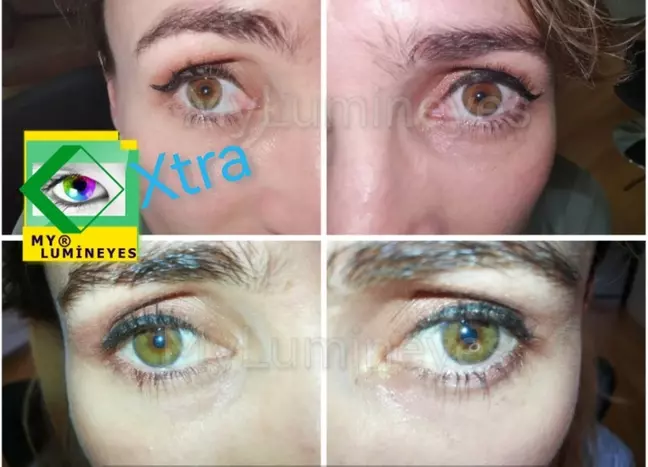
Change your color according your mood
The iris is the colored portion of the eye. It is a muscle that extends and contracts to regulate the pupil size. The pupil dilates in dim light and contracts in strong light. It also changes shape depending on what you’re doing, becoming smaller when you’re doing close-up work like reading. The pigments in the iris compress or spread out as the pupil changes size.
To some extent, this alters the color of the eyes. With some emotions, the pupil shrinks, causing the iris color dispersion and eye color to change. You’ve undoubtedly heard that when you’re furious, your eyes change color, and that’s probably accurate. If your eye color changes dramatically or if just one eye changes, you should see an eye doctor. Similar changes may be symptoms of illnesses such as pigmentary glaucoma or iridocyclitis.
Facts about how eye color can change-Why do eyes change color?
Ludwig and her colleagues looked at 40 babies with blue eyes. By the time they were two years old, 11 of them had brown eyes, 3 had hazel eyes, and 2 had green eyes. Out of the 77 kids born with brown eyes, 73 of them still had their brown eye color by the time they reached the age of two. Blue eyes exhibit a higher propensity for change compared to brown eyes throughout our lifespan.
But why is that, though? According to Ludwig’s research, roughly 33% of newborns had changes in eye color throughout their first two years of life; the most often occurring change is a darkening of the eye color. Out of the 148 youngsters included in the research, only five of them (3.4%) had a change in eye color as they grew older.The darkening tendency may be associated with the buildup of a defensive pigment in the iris, although further details will be discussed later.
According to David Mackey, the proclivity to change eye color may be genetic.
After getting interested in the subject of eye color change, Mackey discovered that these two studies accounted for the majority of the research on juvenile eye color change.
“The major pigment in the eyes is melanin, and the way melanin is dispersed determines the various eye colors.”
“You have blue eyes; some people speak about gray, but it’s actually a version of the blue; then you have hazel and green combinations; and then you have brown eyes, which may be somewhat brown or tremendously dark.” “It’s all tied to the amount of melanin present.”
A change in eye color may not always impact the whole iris, but just a few specks. Pale specks called “Brushfield spots” can appear in the iris of people with Down syndrome, whereas brown flecks called “Lisch nodules” are a common symptom of the hereditary disorder Neurofibromatosis type 1.
Blue eye color
have a low degree of pigment in their eye Scientists just declared that everyone with blue eyes is connected! Blue eyes, which are often recessive, are becoming more uncommon as different ethnic groupings intermarry. I recently questioned my blue-eyed in-laws about how they created my amber-eyed husband, and they told me it was genetically impossible.
Brown pupils
Brown eye color
The most common-prevalent eye color is brown. Individuals with brown eyes have more melanin, and brown eyes are prevalent in more than half of the world’s population.
gray eye color
Gray eyes may seem “blue” at first glance, but they often feature gold and brown specks. In addition, depending on clothes, lighting, and mood, they may seem to “change color” from gray to blue to green (which may change the size of the pupil, compressing the colors of the iris).
Green eye color
Although green is the least prevalent eye color, it is most common in northern and central Europe. I’ve always referred to this hue as hazel!
Hazel eye color
Hazel eyes are predominantly brown and green in color. The hazel eyes, like gray eyes, may seem to “change color” from green to light brown to gold. Individuals with hazel eyes have one color closest to the pupil, another color a bit farther out, and another color at the border of the iris

